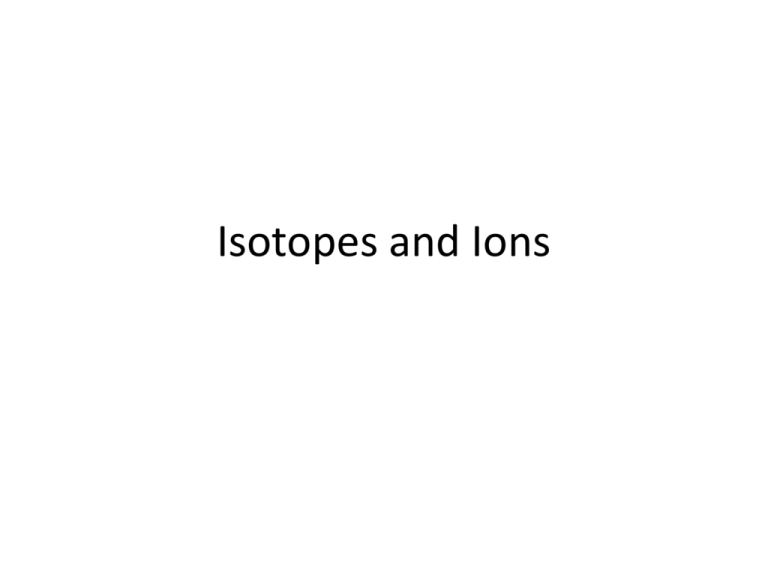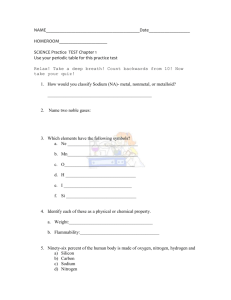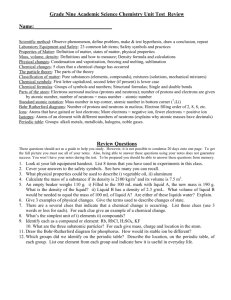Isotopes and Ions
advertisement

Isotopes and Ions Isotopes • Atoms of the same element can have different numbers of neutrons. • different mass numbers. • called isotopes. • Boron-10 (10B) has 5 p and 5 n • Boron-11 (11B) has 5 p and 6 n 11B 10B Symbols • Contain the symbol of the element, the mass number and the atomic number. Symbols • Contain the symbol of the element, the mass number and the atomic number. Mass number Atomic number X Naming Isotopes • Put the mass number after the name of the element. • carbon- 12 • carbon -14 • uranium-235 Symbols • Find the – number of protons – number of neutrons – number of electrons – Atomic number – Mass Number – Name 24 11 Na Symbols • Find the • number of protons • number of neutrons • number of electrons • Atomic number • Mass Number • Name 80 35 Br Symbols • if an element has an atomic number of 34 and a mass number of 78 what is the • number of protons • number of neutrons • number of electrons • Complete symbol • Name Symbols • if an element has 91 protons and 140 neutrons what is the • Atomic number • Mass number • number of electrons • Complete symbol • Name Symbols • if an element has 78 electrons and 117 neutrons what is the • Atomic number • Mass number • number of protons • Complete symbol • Name 1. Isotopes are A. Atoms of the same element with a different number of neutrons. B. Atoms or groups of atoms with a positive or negative charge. C. Cations D. Anions 2. The symbol for an isotope contains A. The atomic number on the top left and the mass number on the bottom left of the symbol. B. The number of electrons. C. Mice D. The mass number on top left and the atomic number on the bottom left of the symbol. 3. When naming an isotope, A. The mass number comes before the element name. B. You just put the elements name. C. The mass number comes after the element name. D. You just put the mass number. IONS • IONS are atoms or groups of atoms with a positive or negative charge. • Taking away an electron from an atom gives a CATION with a positive charge. • Adding an electron to an atom gives an ANION with a negative charge. • To tell the difference between an atom and an ion, look to see if there is a charge in the superscript! Examples: Na+ Ca+2 I- O-2 • Na Ca I O Forming Cations and Anions • A Cation forms when an atom loses one or more electrons. • CATion: PAWSitive • An Anion forms when an atom gains one or more electrons. • Anion: A Negative ION Na Na+ + e- Cl + e- Cl- Forming Cations and Anions • https://www.youtube.com/watch?v=0q5rP7w xrDk Predicting Ion Changes In general • metals (Na) lose electrons ---> cations • nonmetals (Cl) gain electrons ---> anions Learning Check – Counting State the number of protons, neutrons, and electrons in each of these ions. 39 K+ 16O -2 41Ca +2 19 8 20 #p+ ______ ______ _______ #no ______ ______ _______ #e- ______ ______ _______





